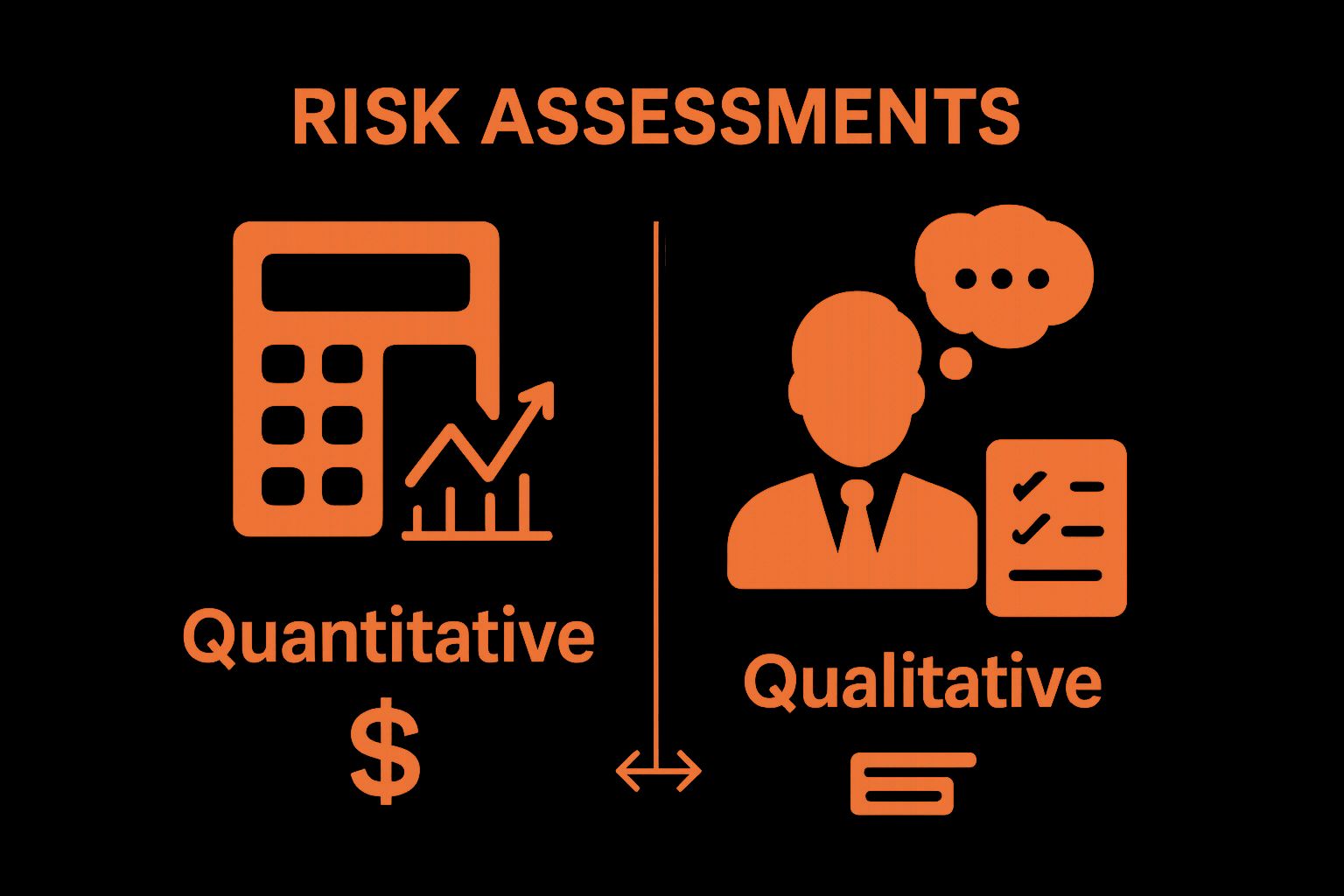
Understanding What Is It Risk Management for Businesses
Risk management sounds technical but it is something every business in South Africa faces, from big banks to small local shops. Now think about this. Over 70 percent of companies say a single major disruption could wipe out their financial reserves in less than six months. You might assume risk management is just about avoiding disaster but the reality is it also helps businesses spot new opportunities and make bolder decisions with confidence.
Table of Contents
- Defining Risk Management: What Is It?
- The Importance of Risk Management in Business
- How Risk Management Works: Key Principles Explained
- Identifying and Assessing Risks: A Deeper Insight
- Implementing Risk Management Strategies in Practice
Quick Summary
| Takeaway | Explanation |
|---|---|
| Effective risk management protects assets. | A robust risk management strategy safeguards an organisation’s financial health and reputation from various disruptions and uncertainties. |
| Proactive identification and assessment are critical. | Systematic risk identification and assessment allow organisations to anticipate potential challenges and develop effective mitigation strategies. |
| Risk management creates competitive advantages. | By transforming potential threats into opportunities, organisations can enhance decision-making, resource allocation, and long-term sustainability. |
| Ongoing training fosters a risk-aware culture. | Cultivating a culture of awareness enables team members to proactively identify risks, leading to better strategic planning and response. |
| Use technology for real-time risk insights. | Leveraging advanced technological tools can provide organisations with timely data for monitoring and assessing risks effectively. |
Defining Risk Management: What Is It?
Risk management represents a systematic approach organisations use to identify, assess, and mitigate potential threats that could disrupt business operations or strategic objectives. At its core, it is a strategic process designed to minimise uncertainty and protect an organisation’s assets, reputation, and financial performance.
The Core Principles of Risk Management
Understanding what is it risk management requires recognising its fundamental principles. According to ISO 31000 international standards, risk management is not about eliminating all risks, but about understanding and controlling them effectively. The process involves several critical stages:
- Identifying potential risks across different business domains
- Evaluating the likelihood and potential impact of these risks
- Developing strategic responses to mitigate or manage identified risks
Strategic Implications for Businesses
Businesses engage in risk management to create a proactive defence mechanism against potential challenges. Read more about our comprehensive IT risk management strategies that help organisations navigate complex technological landscapes. This approach allows companies to transform potential threats into manageable opportunities, enabling more confident decision making.
Risk management goes beyond mere prevention. It involves creating robust frameworks that help businesses anticipate, prepare for, and respond to potential disruptions. By systematically analyzing risks across financial, operational, technological, and compliance domains, organisations can develop resilient strategies that protect their long-term interests and create sustainable competitive advantages.
The Importance of Risk Management in Business
Risk management is a critical strategic function that transforms potential threats into opportunities for organisational growth and resilience. By systematically identifying, assessing, and addressing potential challenges, businesses can protect their assets, reputation, and long-term sustainability.
Financial and Operational Protection
Research from South African Institute of Chartered Accountants emphasises that effective risk management is fundamental to good corporate governance. Businesses face numerous potential disruptions that can significantly impact their financial health:
- Unexpected market shifts
- Technology infrastructure failures
- Regulatory compliance challenges
- Cybersecurity threats
- Economic volatility
Strategic Decision Making and Competitive Advantage
Risk management provides businesses with a structured approach to understanding and navigating uncertainty. Learn more about our comprehensive IT risk assessment process to gain insights into strategic risk mitigation. By developing robust risk frameworks, organisations can make more informed decisions, allocate resources effectively, and create competitive differentiation.
Beyond protection, risk management enables businesses to anticipate potential challenges, develop proactive strategies, and turn potential vulnerabilities into strategic opportunities. This approach allows organisations to build resilience, maintain stakeholder confidence, and create sustainable value in an increasingly complex and unpredictable business environment.
How Risk Management Works: Key Principles Explained
Risk management is a dynamic and structured process that enables organisations to navigate complex business environments with greater confidence and strategic clarity. Unlike traditional reactive approaches, modern risk management emphasises proactive identification, assessment, and strategic mitigation of potential challenges.
Fundamental Stages of Risk Management
According to ISO 31000 international standards, risk management involves a systematic approach with interconnected stages that transform uncertainty into actionable insights. The core stages include:
- Context Establishment: Understanding the organisational environment and risk appetite
- Risk Identification: Systematically detecting potential threats across operational domains
- Risk Assessment: Evaluating likelihood and potential impact of identified risks
- Risk Treatment: Developing strategic responses and mitigation strategies
- Continuous Monitoring: Tracking risk landscape and adjusting strategies
Strategic Implementation and Governance
Explore our comprehensive IT risk assessment process to understand practical risk management implementation. Effective risk management is not a one-time activity but an ongoing organisational commitment.
Below is a table summarising the key stages of the risk management process, helping readers quickly understand how each phase contributes to an effective risk management framework in practice.
| Stage | Purpose | Example Activity |
|---|---|---|
| Context Establishment | Define organisational environment and risk appetite | Assess business objectives and stakeholder expectations |
| Risk Identification | Detect potential threats across all operational domains | Review process documentation for vulnerabilities |
| Risk Assessment | Analyse likelihood and potential impact of each identified risk | Conduct risk scoring or scenario analysis |
| Risk Treatment | Develop strategic responses and mitigation strategies | Implement security measures or develop action plans |
| Continuous Monitoring | Track changes in the risk landscape and adjust strategies as needed | Use dashboards to monitor real-time threats |
Successful risk management transcends mere compliance. It becomes a strategic tool that empowers businesses to make informed decisions, allocate resources efficiently, and build resilience against potential disruptions.
By creating adaptive frameworks that can quickly respond to emerging challenges, organisations transform risk management from a defensive mechanism into a powerful driver of sustainable growth and competitive advantage.
Identifying and Assessing Risks: A Deeper Insight
Risk identification and assessment represent critical components of an effective risk management strategy, requiring meticulous analysis and comprehensive understanding of potential organisational vulnerabilities. This process goes far beyond simple hazard recognition, involving sophisticated techniques that enable businesses to anticipate and strategically prepare for potential disruptions.
Risk Identification Methodologies
Research from the International Risk Management Institute highlights that successful risk identification involves multiple systematic approaches. Organisations must develop comprehensive techniques to uncover potential risks across various operational domains:
- Internal process and system vulnerabilities
- External market and economic uncertainties
- Technological infrastructure challenges
- Regulatory and compliance potential risks
- Human capital and operational performance limitations
Quantitative and Qualitative Risk Assessment
Learn more about our advanced cyber risk assessment strategies that combine sophisticated analytical tools with strategic insights. Effective risk assessment involves two primary evaluation frameworks
 :
:
Quantitative Assessment focuses on numerical measurements, using statistical models and financial metrics to calculate potential monetary impact and probability of occurrence. Qualitative Assessment examines risks through expert judgment, organisational context, and strategic implications that cannot be easily quantified.
The art of risk assessment lies in balancing these analytical approaches, creating a nuanced understanding that enables businesses to develop targeted, flexible risk mitigation strategies. By integrating comprehensive identification techniques with robust assessment methodologies, organisations can transform potential threats into strategic opportunities for growth and resilience.
The following table contrasts quantitative and qualitative risk assessment methods, outlining their main differences and how each approach contributes to a balanced, effective risk assessment.
| Assessment Type | Main Approach | Typical Outputs | When to Use |
|---|---|---|---|
| Quantitative | Uses numerical data, financial metrics, and models | Monetary value of risk, probability | When precise financial impact is needed |
| Qualitative | Relies on expert judgement and organisational context | Risk ranking, descriptive risk levels | When risks are hard to quantify or need contextual insight |
Implementing Risk Management Strategies in Practice
Implementing risk management strategies requires a holistic approach that integrates systematic processes, technological capabilities, and organisational culture. Successful implementation goes beyond theoretical frameworks, demanding practical execution that aligns risk management with broader business objectives and operational realities.
Developing a Risk-Aware Organisational Culture
According to South Africa’s National Treasury guidelines, effective risk management depends on establishing a comprehensive risk-aware culture. This involves creating an environment where risk considerations are embedded in daily decision-making processes:
- Promoting transparency and open communication about potential risks
- Encouraging proactive risk identification at all organisational levels
- Developing clear accountability mechanisms
- Providing continuous risk management training
- Integrating risk considerations into strategic planning
Technological and Procedural Implementation
Explore our comprehensive IT risk management approach that combines advanced technological solutions with strategic insights. Practical implementation requires a multifaceted approach that includes:
Technological Infrastructure: Deploying advanced risk monitoring and assessment tools that provide real-time insights and predictive analytics.
Procedural Frameworks: Establishing standardised risk assessment protocols, reporting mechanisms, and response strategies that can be consistently applied across different organisational domains.
Successful risk management implementation is not a static process but a dynamic, evolving strategy that adapts to changing business environments. By creating flexible, integrated approaches that balance technological capabilities with human expertise, organisations can transform risk management from a compliance requirement into a strategic competitive advantage.

Take Control of IT Risks with Proven Solutions
It is easy to feel overwhelmed by the uncertainty of managing growing cyber threats, data loss, and regulatory demands. The article has shown how proactive risk management is more than a compliance box to tick. For South African engineering and finance businesses, the stakes are high. Missed risks can lead to data breaches, costly downtime, and damaged reputations. You need more than just frameworks—you need expert guidance to identify risks early, respond swiftly, and build ongoing resilience.
Let Techtron step in as your dedicated IT partner. We specialise in comprehensive IT risk management strategies designed for businesses like yours that cannot afford disruption. Benefit from tailored services including cyber risk assessment, managed security, and reliable cloud solutions. If you want a team that turns complex risk challenges into simple, secure operations, visit Techtron today. Secure your business future now and make risk management your competitive edge.
Frequently Asked Questions
What is risk management in business?
Risk management in business is a systematic approach to identifying, assessing, and mitigating potential threats that could impact operations or strategic objectives, aimed at protecting assets and financial performance.
Why is risk management important for businesses?
Risk management is essential because it helps businesses proactively address potential disruptions, protect their assets and reputation, and make informed strategic decisions, ultimately creating opportunities for growth and resilience.
What are the key steps in the risk management process?
The key steps in the risk management process include context establishment, risk identification, risk assessment, risk treatment, and continuous monitoring to create a dynamic framework that addresses potential challenges.
How can businesses develop a risk-aware culture?
Businesses can develop a risk-aware culture by promoting transparency, encouraging proactive risk identification, establishing clear accountability, providing continuous training, and integrating risk considerations into all levels of decision-making.